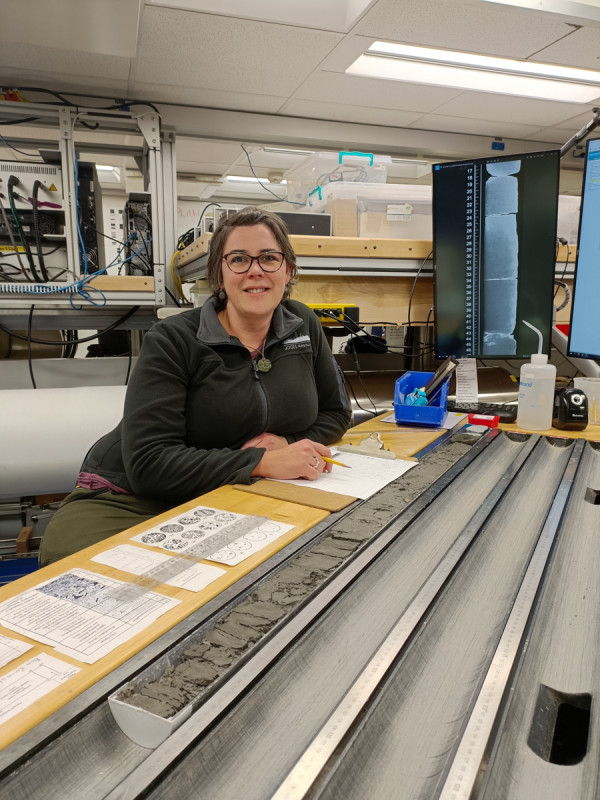Unlocking the secrets to our future sea level hidden in Greenland Ice Sheet’s past
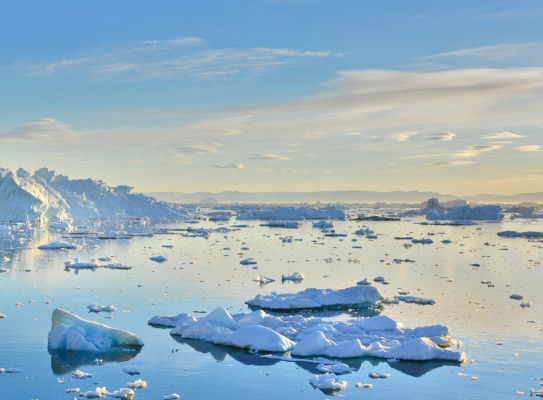
The melting of the Greenland Ice Sheet will influence the sea level around Aotearoa’s coastlines more than the melting of the Antarctic Ice Sheet. GNS Science sedimentologist Georgia Grant is studying newly recovered marine sediment records from near the northwest Greenland continental shelf, seeking insights into New Zealand’s future sea-level rise.
Sea level ‘fingerprints’ – why the Greenland Ice Sheet matters more to New Zealand now than the Antarctic Ice Sheet
Melting ice sheets do not raise sea level evenly across the globe. It may sound counterintuitive, but meltwater from the Greenland Ice Sheet around 16,000km away will have a greater relative impact on New Zealand’s coastlines than that of the much closer Antarctic Ice Sheet around 5,000km away. This is due to the gravitational pull these huge masses of ice exert on the oceans nearby. When ice sheets melt and lose mass, their gravitational pull on the surrounding water weakens, and Earth’s rotation redistributes the meltwater away from the source. Consequently, ocean levels drop near to the ice sheet, while sea levels further away in other parts of the globe increase.

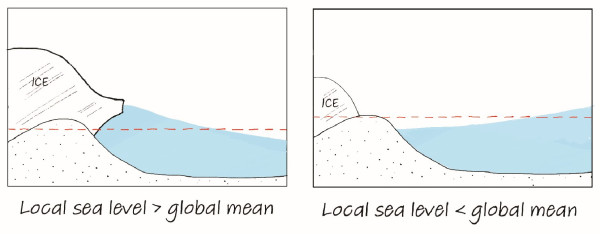
Both the Greenland and Antarctic ice sheets are experiencing a rapid acceleration of melting in response to human-induced global warming. The Greenland Ice Sheet is losing mass roughly twice as fast as the Antarctic Ice Sheet, which has significant implications for sea-level rise in New Zealand, because when the Greenland Ice Sheet melts, the rise in sea level is pushed to the southern hemisphere.
Of course, the Antarctic Ice Sheet is also very important to New Zealand. Antarctica is much bigger, holding the equivalent of around 65 metres of sea level, while Greenland is much smaller in comparison, with around seven metres of sea level equivalent.
Grant is embarking on research to better understand how the Greenland Ice Sheet and Antarctic Ice Sheet interact with each other.
Both ice sheets are important to Aotearoa. Antarctica is in our backyard, and it’s so big. But it’s important for us to understand how the Greenland Ice Sheet is melting, as it appears to be more vulnerable at this time. It could experience more rapid collapse and sea-level rise that would really hit New Zealand a lot more than it would in the Northern Hemisphere.
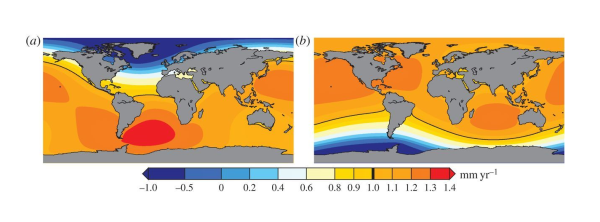
Impact of Earth’s orbital cycles on ice sheet advance and retreat in the past
Earth’s path around the sun changes through time in a cyclical manner, going from circular to oval over timescales of thousands of years, directly dictating how much sunlight and heat we get here on Earth. The variations are subtle but are enough to impact Earth’s overall temperature and oceanic and atmospheric circulation, and drive the advance (growth) and retreat (melt) of ice sheets and the cycling of glacial (ice age) and interglacial periods of the past.
While orbital cycles are well documented in existing global climate records, what’s not clear is whether the Greenland Ice Sheet and Antarctic Ice Sheet have similar orbital drivers – whether they respond ‘in-phase’ (and amplify the sea-level rise) or ‘out-of-phase’ (and dampen sea-level rise) during warmer-than-present climates. Understanding how the ice sheets respond is vital to predict future sea-level rise.
The question is, if the Greenland Ice Sheet starts to melt more quickly, does that trigger a response from the Antarctic Ice Sheet, and vice versa? The timing of the ice sheets melting and growing has big implications for our future global sea level fingerprint.

While the ice sheet response to orbital cycles happens on much longer timescales than we currently consider, it underpins the mechanics of how increasing temperature in the ocean and atmosphere melts ice sheets.
“What we’re hoping to understand is if the climate conditions that humans are creating, as we head towards more than 1.5 degrees Celsius of warming, will have the same impact on the ice sheets that the orbital cycles do. To learn how our changes to the climate might influence the ice sheet retreat we first need to understand the natural ice sheet response to past climates.”
World-first deep-sea sediment record from close to Greenland’s continental shelf holds secrets to ice sheet response
It’s challenging to distinguish the effects of orbital cycles in our current climate observations, due to them being overshadowed by human-induced changes to the climate, and because the timeframes under which ice sheets respond to orbital cycles are much longer that what we have measurements for.
To understand how the Greenland Ice Sheet and Antarctic Ice Sheet have evolved through time, Grant will be analysing glacio-marine sediment cores from close to the ice sheets, from a warmer period three million years ago, when CO₂ was as high as present.
“One of the useful things about looking at these time periods from millions of years ago is that they show a climate that’s in equilibrium - it’s an example of exactly how the climate system interacts without human influence and with long-term feedbacks played out,” says Grant.
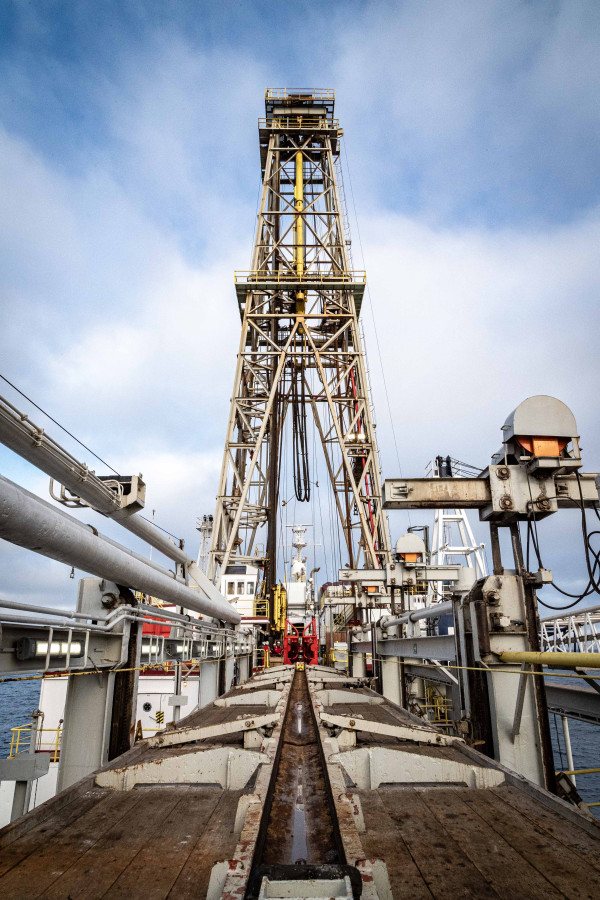
The Greenland sediment cores were drilled at six sites in Baffin Bay, off the continental shelf of northwest Greenland, on a recent International Ocean Discovery Program expedition (IODP Exp 400) from August to October 2023. The deepest site went down to 980m below the sea floor, in water 500m deep, while other sites were in deeper water to around 1800 metres. While there were existing records from the Antarctic Ice Sheet, this is the first time climate records have been drilled from the Greenland Ice Sheet.
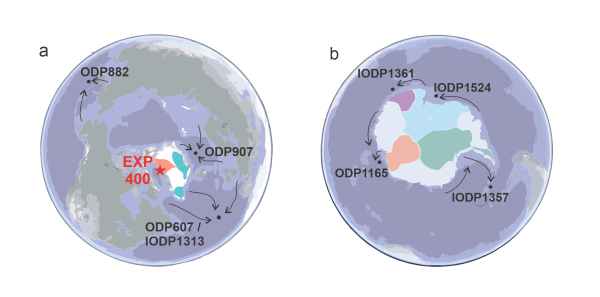
Grant will examine the Greenland Ice Sheet sediment for signs of ice sheet advance (growth) and retreat (melt). The sediment builds up in layers of millions of years, alternating between coarse grained sediment (sand and gravel) to fine-grained sediment (mud). Similar to walking out from a sandy beach, the sediment becomes muddier underfoot the further out you get. During an ice age or glacial period, when the ice sheet has advanced further out on the continental shelf, the grain size of sediments is larger as the ice can carry sand and gravel. When the ice has retreated during an interglacial like today, and the site is in deep water (> 200 m) the sediment is primarily mud with an occasional pebble indicating ice bergs are floating over the site.
The age of the sediment is determined by analysing microfossils like phytoplankton that live during certain time periods and using the polarity of Earth’s magnetic field (magnetic north changes through time and this pattern is specific to different time periods). Combined with the sediment analysis this ultimately reveals how many cycles of ice sheet advance and retreat have occurred in a certain time period and which orbital cycle drives the ice sheet change.
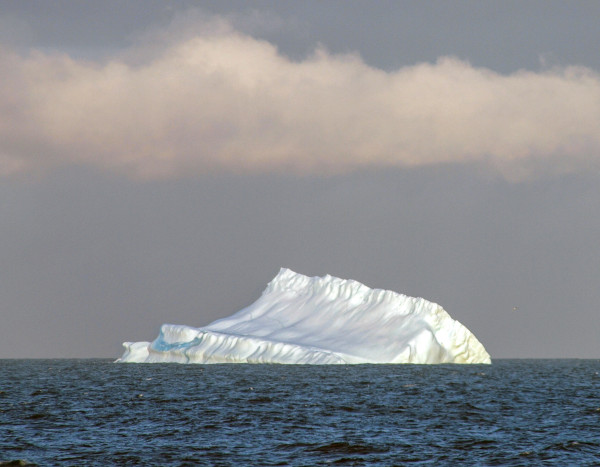
By comparing these cycles in Greenland to the records from Antarctic Ice Sheet, Grant aims to answer the question of whether the Greenland Ice Sheet and Antarctic Ice Sheet will retreat in-phase under warmer-than-present-climates, and ultimately enhance future climate projections and inform strategies for mitigating the impacts of sea-level rise.
“Understanding whether the Greenland and Antarctic ice sheets have melted at the same time or act somewhat independently of each other has important implications for future sea-level projections.”
Georgia Grant’s research is supported by a Marsden Fund Fast-Start grant.
